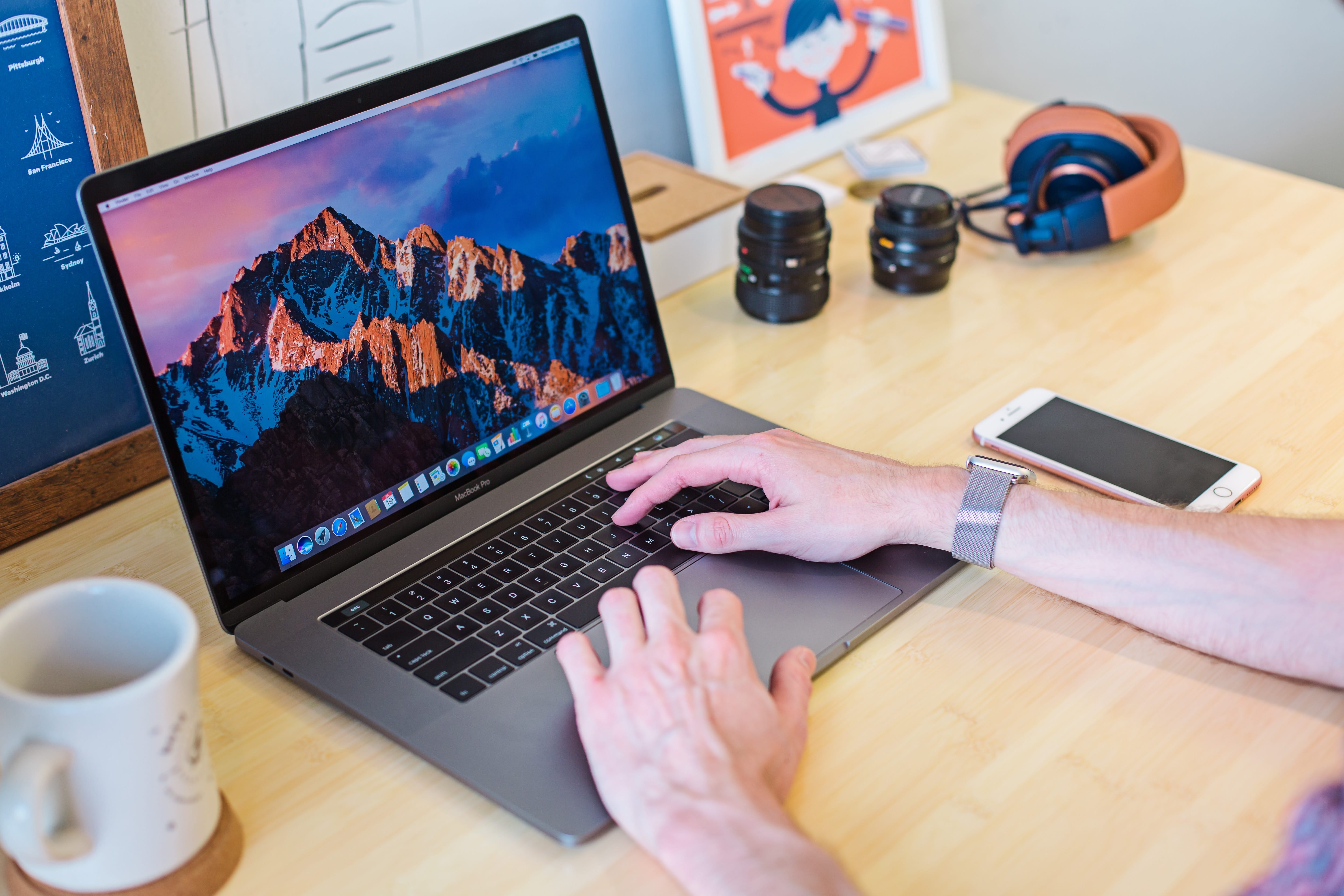
Cyber Security on Mac
Cyber crime is becoming one of the biggest threats to an organisations success. Avoiding the constant threat is extremely important – we’ve made a few steps on how to stay prepared.
Ever emailed the WRONG person???
Sharing confidential or personal data outside your organisation in error can cause a corporate nightmare… we have found that one of the biggest risks in an organisation is human error. So how can your Mac help you to spot errors before they occur? Let’s find out…
Open the Mac ‘Mail’ application, select ‘Mail’ in the toolbar, and choose ‘Preferences’. Once in preferences, navigate to the ‘Composing’ section. The Composing section allows us to customise the experience we have when composing a new email.
Notice there is an option to ‘Mark addresses not ending with…’ option. Simply enter your email domain in here, and ensure that the checkbox is ticked. From now on, when you compose a new email, all recipients INSIDE your organisation will be highlighted in blue, and all recipients OUTSIDE your organisation will be highlighted in red. When intending to send information within your organisation, all you need to do is check that all of your recipients are listed in blue. Simple right?
Mitigating the Risks of Mobile Working
When you’re working in the office, or even at home, you will no doubt be sitting behind a firewall. At a very simplistic level, firewalls allow you to configure incoming and outgoing connections (allow/deny/etc). So are you protected by a firewall when not working at home or in the office? Let’s find out…
In the top left-hand corner of your screen, select the ‘Apple’ logo, and choose ‘System preferences’. Next, navigate to the ‘Security & Privacy’ pane, and once there, select ‘Firewall’… and the big question, is it turned on?
“I’ve lost my Mac”…
Sadly, it happens. But loosing your work laptop can have much greater ramifications than hardware cost. What data do you store on there? Maybe it’s payroll, maybe its your work email account? The scary thing is, without the proper protection, anyone can bypass the password on your laptop, and jump in to your account… unless it’s encrypted. Encrypting a Mac is easy…
In the top left-hand corner of your screen, select the ‘Apple’ logo, and choose ‘System preferences’. Next, navigate to the ‘Security & Privacy’ pane, and once there, select ‘FileVault’. FileVault is a built-in tool, that allows you to encrypt your Mac for free. Pre-requisites? Back up your machine first, to make sure that there are no errors when encrypting. When you encrypt with FileVault, you will be given a recovery key, which can be used to remove encryption at a later date – KEEP THIS SAFE.
It’ll take a little time to encrypt your Mac, but definitely worth it in terms of data security!
Malware-ridden apps
Some people think that malware-ridden apps are exclusively linked to adult-content, or illicit activity. The reality however is that malware has made its way in to all kinds of apps, including games, utilities, and other seemingly harmless sources. It’s becoming so easy to install applications with embedded malware. How can your Mac help? it’s simple…
In the top left-hand corner of your screen, select the ‘Apple’ logo, and choose ‘System preferences’. Next, navigate to the ‘Security & Privacy’ pane, and once there, select ‘General’. In the lower half of the window, you will see a tool called GateKeeper. GateKeeper checks out apps before you install them, and makes the decision for you; allowing you to install apps from the app store (or a trusted source), and stopping you from installing apps from untrusted developers!
Two-Factor Authentication
Over the last few years, there have been numerous studies and articles published, outlining the vulnerabilities of ‘single factor authentication’, such as just using a password for your account. Two-factor authentication is just that, a second level of authentication for your account – this can be provided in many ways, one of the most popular methods being a text message which includes a code.
Why is this important? Well… if you have employees using Macs, do you allow them to sign in with their own Apple ID, or a work Apple ID? Either way, if they then utilise tools like the ‘Notes’ app, any notes they make (including things like customer notes, personal data, confidential data) will likely be syncing back to their iCloud account… If you haven’t explored this yet at your organisation, now is the time, as knowing the what and where for your organisations data is paramount.
To enable two-factor authentication on your Apple ID, simply go to the top left-hand corner of your screen, select the ‘Apple’ logo, and choose ‘System preferences’. Next, select ‘iCloud’, and choose ‘Account Details’. Finally, select ‘Security’, and follow the onscreen instructions to set this up. When enabling two-factor authentication, you will be given a code – KEEP THIS SAFE – you will need this later if you forget your password.
Multiple Macs in your organisation?
Enabling security features on one, or a few Mac devices in a manual manner is simple. If you’re managing a larger number of Mac devices in your organisation however, you should consider adopting a Mobile Device Management (MDM) system, which will allow you to make changes to your Mac deployment en-masse.
In summary…
Your Mac is packed with security features already. Some, like XProtect, work in the background without you having to do anything, whilst others, however, you have to enable. The features outlined above are just a few of the tools you can utilise to help secure your Mac.